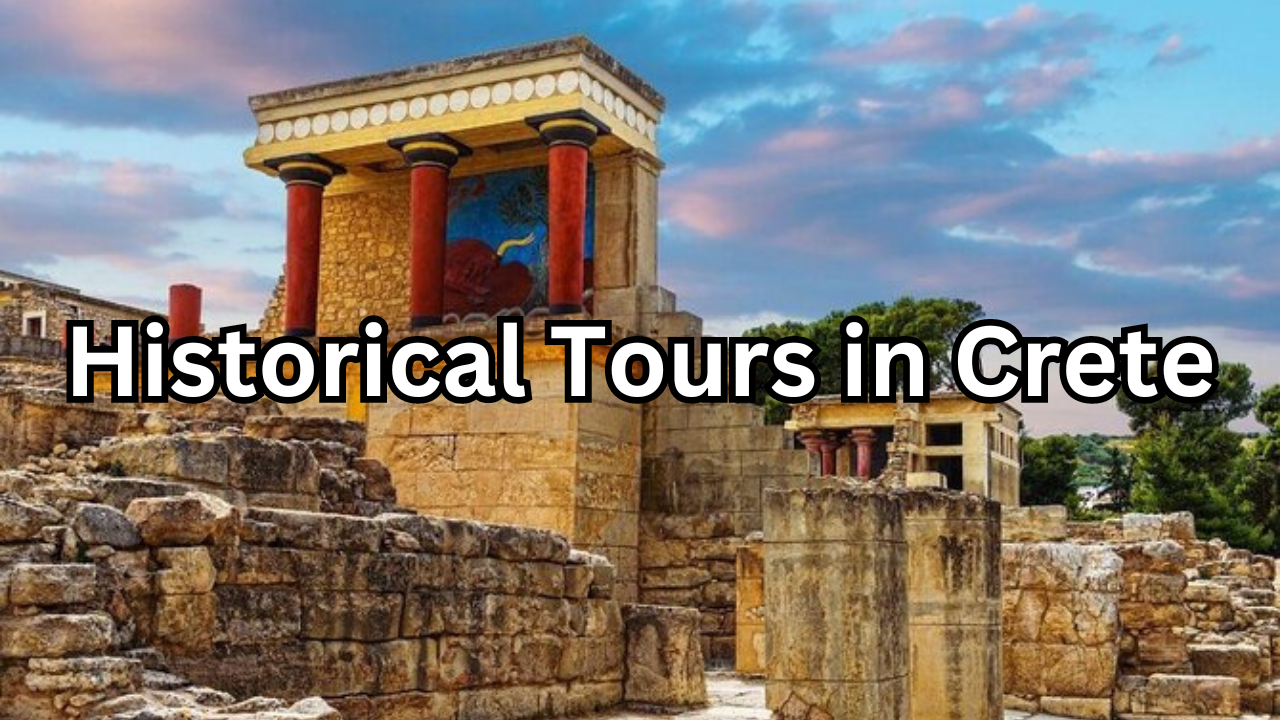Table of Contents
Introduction
Crete, the largest and most populous of the Greek islands, holds a wealth of historical treasures dating back thousands of years. From ancient Minoan civilizations to Byzantine and Venetian influences, Crete’s history is a tapestry woven with diverse cultural threads. Exploring this rich heritage through historical tours offers an immersive experience that unveils the island’s past in a captivating way.
In this guide, we delve into the top historical tours in Crete, each offering a unique glimpse into different periods of Cretan history. From the legendary Knossos Palace, a testament to the advanced Minoan civilization, to the medieval fortresses of Rethymno and the poignant history of Spinalonga Island, these tours paint a vivid picture of Crete’s past.
Join us as we embark on a journey through time, uncovering the stories, architecture, and artifacts that make Crete a treasure trove of historical wonders waiting to be explored.
Brief Overview of Crete’s Historical Significance
Crete’s historical significance spans millennia, making it a cradle of civilization in the Mediterranean. It is renowned as the birthplace of the Minoan civilization, one of the earliest advanced societies in Europe, dating back to around 2700 BCE. The island’s strategic location facilitated trade routes between Europe, Africa, and Asia, leading to cultural exchanges and the enrichment of its heritage.
Throughout history, Crete has been a melting pot of cultures, influenced by Minoans, Mycenaeans, Romans, Byzantines, Venetians, Ottomans, and more. Each era left its mark on the island, evident in its architecture, art, language, and traditions. Notable sites such as Knossos Palace, Gortyna, and the Arkadi Monastery bear witness to these diverse cultural layers, offering insights into the island’s storied past.
Importance of Historical Tours for Understanding Crete’s Heritage
Historical tours play a pivotal role in preserving and showcasing Crete’s rich heritage. They provide immersive experiences that bring history to life, allowing visitors to connect with the island’s past on a deeper level. By exploring archaeological sites, museums, and historical landmarks, tourists gain a comprehensive understanding of Crete’s cultural evolution and contributions to civilization.
These tours offer a platform for education, fostering an appreciation for the achievements and struggles of past civilizations. They also promote cultural exchange and dialogue, encouraging visitors to engage with local communities and traditions. Ultimately, historical tours serve as a bridge between the past and present, preserving Crete’s heritage for future generations to cherish and learn from.
Knossos Palace Tour
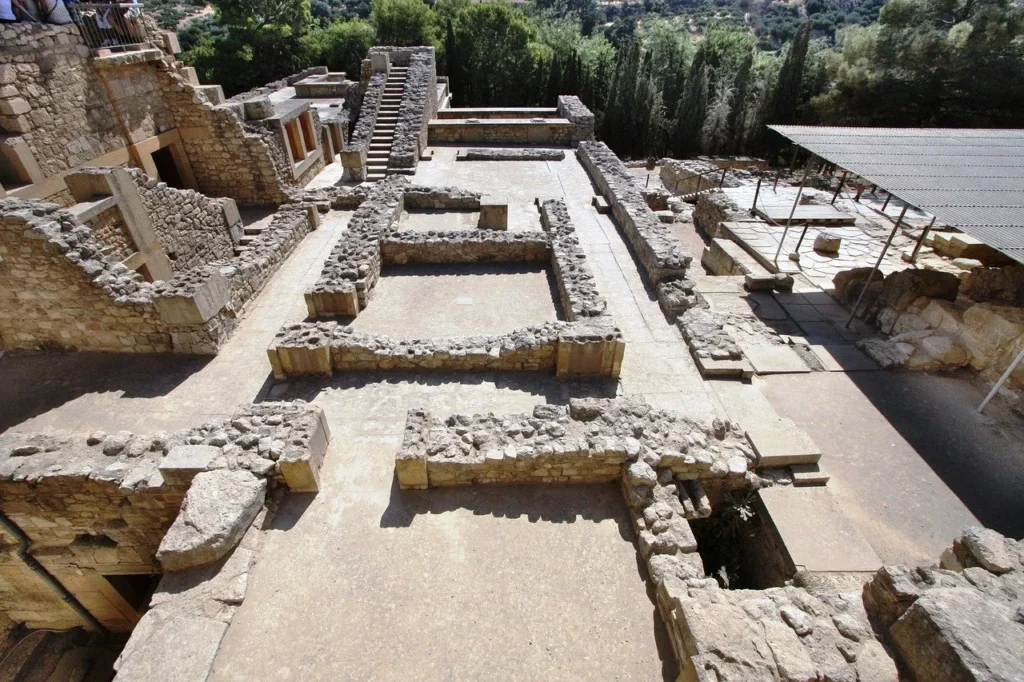
The Knossos Palace Tour offers a captivating journey into the heart of ancient Minoan civilization, showcasing the legendary palace complex that stands as a testament to Crete’s rich history. Situated near Heraklion, Knossos Palace is one of the most significant archaeological sites in Greece, dating back over 3,000 years. The tour takes visitors through labyrinthine corridors, royal chambers adorned with vibrant frescoes, and ceremonial spaces that reflect the advanced architectural and artistic achievements of the Minoans. Highlights include the Throne Room with its iconic griffin fresco, the Grand Staircase, and the intriguing labyrinthine design that has sparked myths and legends throughout the ages. Exploring Knossos Palace unveils insights into ancient governance, religious practices, and daily life, offering a profound appreciation for the cultural legacy of Crete’s earliest civilization.
Description of Knossos Palace
Knossos Palace, located near Heraklion in Crete, is an ancient archaeological site that served as the center of the Minoan civilization. The palace complex covers a vast area and consists of intricately designed structures, courtyards, and chambers. It is renowned for its unique architectural features, including colorful frescoes depicting scenes from daily life, intricate labyrinthine layouts, and advanced plumbing systems.
Highlights of the Tour
The Knossos Palace tour offers visitors a chance to explore the palace’s remarkable features and learn about its historical significance. Highlights of the tour include:
- The Throne Room: Adorned with the famous griffin fresco, this room is believed to have been a ceremonial space where the Minoan rulers held court.
- The Grand Staircase: An impressive staircase that showcases the Minoans’ architectural prowess and leads to various levels of the palace.
- The Queen’s Megaron: A luxurious chamber believed to be the residence of the queen, featuring beautiful frescoes and intricate decorations.
- The Central Court: A large open space surrounded by columns and rooms, likely used for gatherings, rituals, and public events.
- The Minoan Theater: An ancient theater where performances and religious ceremonies were held, offering insights into Minoan culture and entertainment.
Historical Significance of Minoan Civilization
The Minoan civilization, centered around Knossos Palace, is of immense historical significance. It flourished during the Bronze Age, from approximately 2700 BCE to 1450 BCE, and is considered one of the earliest advanced civilizations in Europe. The Minoans were skilled architects, artists, traders, and seafarers, known for their vibrant art, sophisticated pottery, and maritime influence.
The civilization’s achievements include the development of a complex writing system known as Linear A (which remains undeciphered), the construction of elaborate palaces like Knossos, and extensive trade networks that connected Crete with Egypt, the Near East, and beyond. The Minoans also practiced religious rituals, evidenced by the presence of sanctuaries, altars, and religious artifacts at Knossos and other sites.
Understanding the historical significance of the Minoan civilization is crucial for appreciating Crete’s role in shaping ancient Mediterranean culture and its enduring impact on art, architecture, and society.
Heraklion Archaeological Museum Visit
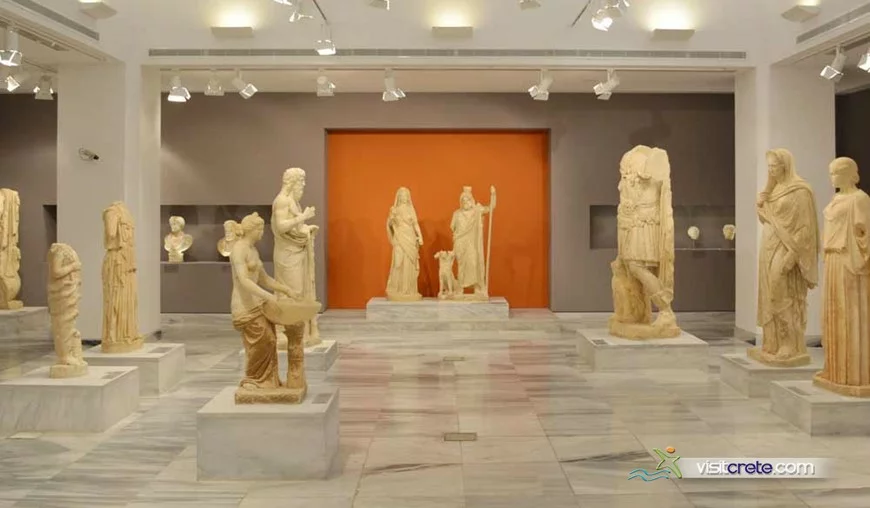
The Heraklion Archaeological Museum stands as a beacon of Crete’s rich historical legacy, housing an extensive collection of artifacts that span millennia. Located in the heart of Heraklion, the museum offers visitors a captivating journey through the island’s history, from the ancient Minoans to the Byzantine era.
Upon entering the museum, visitors are greeted by a wealth of treasures, including pottery, sculptures, jewelry, and everyday objects that provide insights into the lives of ancient Cretans. Notable highlights of the museum visit include:
- Minoan Artifacts: The museum boasts a vast collection of Minoan artifacts, including intricately decorated pottery, exquisite gold jewelry, and frescoes depicting scenes from Minoan life. These artifacts offer a glimpse into the artistic and cultural achievements of the Minoan civilization.
- Phaistos Disc: One of the museum’s most famous exhibits is the Phaistos Disc, a circular clay disk inscribed with mysterious symbols. Dating back to the Minoan era, the disc remains a subject of scholarly debate and fascination.
- Snake Goddess: Another iconic artifact is the Snake Goddess figurine, a symbol of Minoan religious beliefs and rituals. The intricately crafted figurine depicts a female deity holding snakes, reflecting the Minoans’ reverence for nature and fertility.
- Byzantine Collection: The museum also houses a significant collection of Byzantine artifacts, including religious icons, manuscripts, and church artifacts. These exhibits showcase the Byzantine influence on Crete’s art and culture during the medieval period.
Visiting the Heraklion Archaeological Museum offers a comprehensive understanding of Crete’s cultural evolution, from its ancient origins to its Byzantine heritage. It allows visitors to appreciate the island’s contributions to art, archaeology, and civilization, making it a must-visit destination for history enthusiasts and cultural explorers alike.
Overview of the Museum’s Collections
The Heraklion Archaeological Museum houses a diverse array of collections that span different periods of Cretan history. Its exhibits are meticulously curated to showcase the island’s cultural heritage, making it one of the most significant museums in Greece. The museum’s collections are organized chronologically, offering a comprehensive journey through time for visitors.
Notable Artifacts and Exhibits
- Minoan Artifacts: The museum’s Minoan collection is particularly noteworthy, featuring pottery, frescoes, and artifacts from the ancient Minoan civilization. Notable pieces include the Phaistos Disc, Snake Goddess figurines, and ceremonial objects that provide insights into Minoan religious beliefs, daily life, and artistic achievements.
- Roman Artifacts: The Roman collection includes statues, mosaics, and everyday objects that reflect Crete’s incorporation into the Roman Empire. Visitors can explore Roman-era artifacts such as statues of gods and emperors, decorative elements from villas, and artifacts from daily Roman life.
- Byzantine Art and Artifacts: The museum’s Byzantine collection showcases religious icons, manuscripts, jewelry, and artifacts from churches and monasteries across Crete. These exhibits offer a glimpse into Byzantine religious art, iconography, and the influence of Christianity on the island’s culture.
Insight into Minoan, Roman, and Byzantine History
Visiting the Heraklion Archaeological Museum provides a deep insight into the intertwined histories of Crete under different civilizations:
- Minoan History: The museum’s Minoan artifacts and exhibits offer a window into the Bronze Age civilization that thrived on Crete, showcasing advancements in art, architecture, and culture that characterized the Minoan era.
- Roman History: Through Roman artifacts and exhibits, visitors can learn about Crete’s integration into the Roman Empire, Roman governance, daily life, and the cultural exchanges that occurred during this period.
- Byzantine History: The Byzantine collection sheds light on Crete’s Byzantine era, highlighting the island’s Christian heritage, religious art, Byzantine rule, and the legacy of Byzantine culture on Crete’s identity.
Overall, the Heraklion Archaeological Museum provides a holistic understanding of Crete’s historical continuum, from its ancient roots to its Byzantine legacy, enriching visitors’ knowledge of the island’s cultural and historical significance.
Phaistos and Agia Triada Excursion
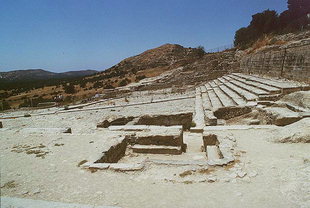
Embarking on the Phaistos and Agia Triada Excursion unveils a captivating journey through the ancient Minoan civilization, offering insights into Crete’s rich historical tapestry. Phaistos, located in southern Crete, boasts one of the most significant Minoan palace complexes, showcasing advanced architectural features and artifacts dating back thousands of years. Visitors can explore the labyrinthine corridors, storerooms, and ceremonial spaces of Phaistos, gaining a deeper understanding of Minoan culture, governance, and daily life.
Adjacent to Phaistos lies Agia Triada, a smaller but equally compelling archaeological site. Agia Triada was a prosperous Minoan town with impressive architectural remains, including a central courtyard, residential areas, and a sanctuary. The excursion to Agia Triada provides a glimpse into Minoan urban planning, religious practices, and social structures.
Together, the Phaistos and Agia Triada Excursion offers a comprehensive view of the Minoan civilization’s complexities, from grand palaces to bustling towns, highlighting Crete’s enduring legacy as a cradle of ancient Mediterranean culture.
Exploration of Phaistos Archaeological Site
The Phaistos archaeological site offers a fascinating exploration into the heart of Minoan civilization. Situated in southern Crete, Phaistos was once a thriving palace complex and important center of Minoan culture. Visitors to the site can wander through the remnants of grand courtyards, intricate labyrinthine corridors, and storerooms that reflect the advanced architectural prowess of the Minoans. Notable features include the central court, the royal quarters, and the impressive Phaistos Disc, an enigmatic artifact that remains a subject of scholarly debate. Exploring Phaistos provides a firsthand experience of Minoan urban planning, craftsmanship, and societal structure.
Visit to Agia Triada and Its Significance
Adjacent to Phaistos lies the archaeological site of Agia Triada, offering a unique glimpse into Minoan urban life and culture. Agia Triada was a prosperous Minoan town with a well-preserved central courtyard, residential areas, workshops, and a sanctuary dedicated to religious rituals. The visit to Agia Triada provides insights into Minoan economic activities, craftsmanship, and social organization. Noteworthy discoveries at Agia Triada include exquisite frescoes, pottery, and artifacts that shed light on the town’s significance as a center of trade, craftsmanship, and religious practices during the Minoan era.
Understanding Minoan Culture and Architecture
The Phaistos and Agia Triada excursion offers a comprehensive understanding of Minoan culture and architecture. It allows visitors to delve into the artistic achievements, religious beliefs, and daily life of the Minoans, known for their vibrant frescoes, intricate pottery, and advanced building techniques. By exploring these archaeological sites, visitors gain insights into Minoan urban planning, social hierarchy, economic activities, and the religious significance of sanctuaries and rituals. The excursion fosters an appreciation for the enduring legacy of the Minoan civilization and its contributions to ancient Mediterranean culture and architecture.
Chania Old Town Walking Tour
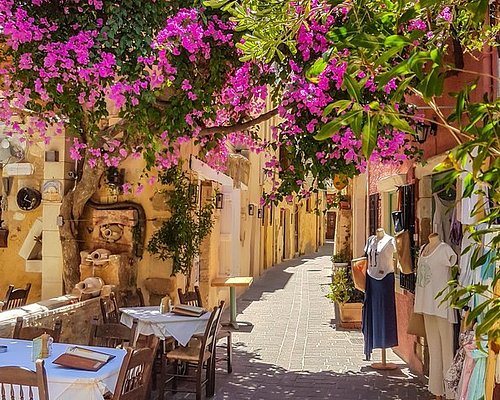
Embarking on a Chania Old Town walking tour is akin to stepping into a living museum of history, culture, and architectural splendor. Nestled on the northwestern coast of Crete, Chania’s old town is a picturesque labyrinth of narrow alleys, Venetian buildings, Ottoman influences, and Byzantine remnants. The tour begins at the iconic Venetian Harbor, where centuries-old lighthouse and colorful waterfront buildings greet visitors with a timeless charm. As you meander through the cobblestone streets, you’ll encounter historical landmarks such as the majestic Venetian Fortress of Firkas, the elegant Mosque of the Janissaries, and the grandeur of the Archaeological Museum of Chania, housing artifacts from Minoan to Roman times. The old town’s vibrant atmosphere is enhanced by artisan shops, cozy cafes, and traditional tavernas offering a taste of Cretan cuisine. With each step, the Chania Old Town walking tour immerses you in the layered history and enchanting beauty of this coastal gem, making it a memorable journey through time and culture.
Introduction to Chania’s Old Town
Chania’s old town is a captivating blend of history, culture, and natural beauty nestled along the scenic northwestern coast of Crete. Stepping into its narrow alleys and charming squares feels like entering a timeless labyrinth steeped in centuries of heritage. The old town’s cobblestone streets are lined with colorful buildings adorned with bougainvillea, creating a picturesque and inviting atmosphere for visitors to explore.
Venetian and Ottoman Influences
Chania’s old town bears the indelible marks of Venetian and Ottoman occupations, showcasing a unique fusion of architectural styles. Venetian influences are evident in the fortified walls, arched doorways, and elegant facades of buildings like the Venetian Manor Houses and the Church of San Salvatore. Meanwhile, Ottoman architecture is reflected in structures like the Mosque of the Janissaries and the Turkish Bathhouse, adding an exotic flair to the town’s character.
Key Historical Sites like the Venetian Harbor
One of the standout features of Chania’s old town is its historic Venetian Harbor, a bustling waterfront area steeped in maritime history. The harbor is adorned with the iconic Venetian lighthouse, a symbol of Chania’s maritime heritage. Visitors can stroll along the waterfront promenade, admire the colorful fishing boats bobbing in the harbor, and soak in panoramic views of the Aegean Sea and the distant White Mountains.
Other key historical sites in Chania’s old town include the Venetian Fortress of Firkas, which once protected the harbor, and the Archaeological Museum of Chania, housing a rich collection of artifacts spanning millennia. Exploring these sites offers a glimpse into Chania’s multifaceted past, from its Venetian and Ottoman legacies to its ancient roots dating back to Minoan times.
Rethymno Fortress and Old Town Exploration
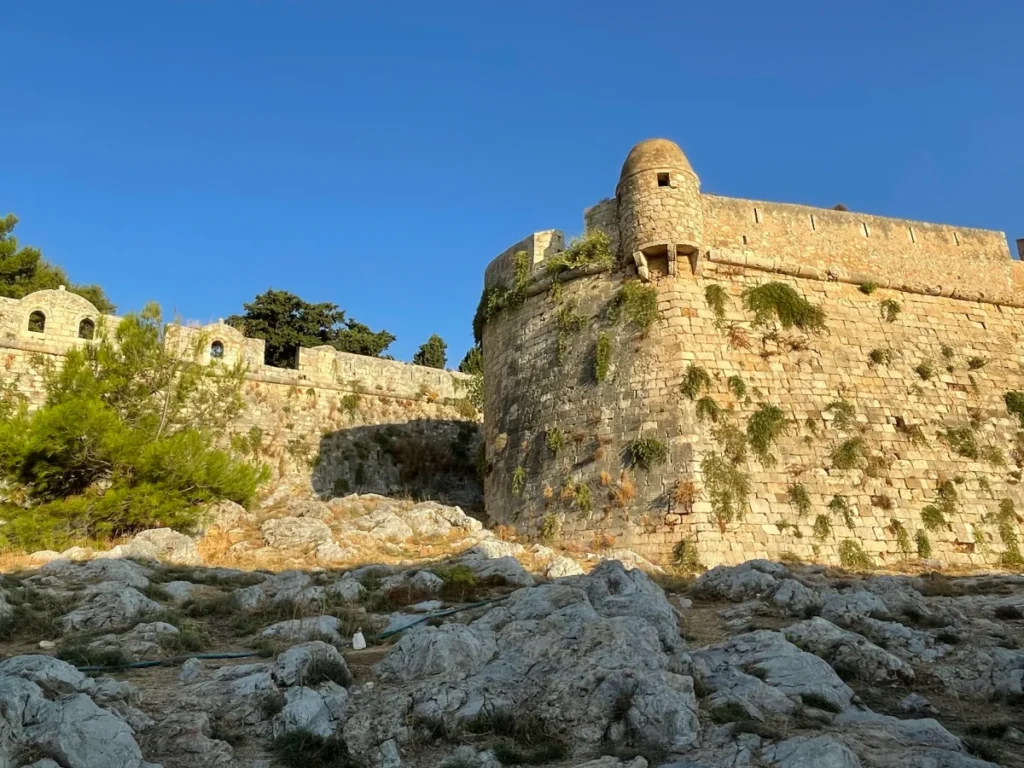
Embarking on an exploration of Rethymno Fortress and Old Town is like stepping back in time to a world of medieval charm and historical intrigue. Situated on the northern coast of Crete, Rethymno boasts a well-preserved Venetian fortress that dominates the skyline, serving as a testament to the town’s strategic importance throughout history. The fortress, known as Fortezza, offers panoramic views of the town and the sea, inviting visitors to delve into its centuries-old walls, bastions, and battlements.
As you wander through Rethymno’s old town, you’ll encounter a tapestry of Venetian, Ottoman, and Greek influences in its architecture, narrow alleys, and traditional buildings. The Venetian Harbor, with its picturesque waterfront promenade lined with cafes and tavernas, provides a delightful setting for leisurely strolls and scenic views of the harbor and lighthouse.
Key attractions in Rethymno’s old town include the Rimondi Fountain, a Venetian-era landmark adorned with carved lions, and the Neratze Mosque, a striking example of Ottoman architecture. The Archaeological Museum of Rethymno offers insights into the town’s ancient past, while the Historical and Folklore Museum showcases Cretan traditions and heritage.
Exploring Rethymno Fortress and Old Town is a journey into the layers of history and culture that have shaped this coastal town, making it a captivating destination for history enthusiasts and travelers seeking to immerse themselves in Crete’s rich heritage.
Overview of Rethymno Fortress
Rethymno Fortress, also known as Fortezza, is a magnificent Venetian fortress that stands proudly atop a hill overlooking the town of Rethymno on the northern coast of Crete. Built in the 16th century by the Venetians, the fortress served as a strategic stronghold to defend against invaders and pirates. Its impressive walls, bastions, and towers are a testament to the military engineering prowess of the Venetians. Today, Rethymno Fortress is a prominent landmark and a symbol of the town’s historical significance.
Historical Background of Rethymno Old Town
Rethymno’s old town is steeped in a rich tapestry of history dating back centuries. Originally inhabited by Minoans and later by the ancient Greeks, the town flourished during the Venetian and Ottoman periods. Its strategic location made it a hub of trade and cultural exchange, attracting merchants, scholars, and artists from across the Mediterranean.
Ottoman and Venetian Heritage
Rethymno’s old town bears the marks of its Ottoman and Venetian heritage, creating a unique blend of architectural styles and cultural influences. The Venetian influence is evident in the well-preserved buildings, narrow alleys, and the iconic Rimondi Fountain, a symbol of the town’s Venetian past. Meanwhile, Ottoman architecture is reflected in structures such as the Neratze Mosque and the Ottoman-era houses with their characteristic wooden balconies.
The coexistence of Ottoman and Venetian heritage in Rethymno’s old town is a testament to the town’s diverse history and the cultural exchanges that have shaped its identity. Exploring the cobblestone streets, historic landmarks, and vibrant atmosphere of Rethymno’s old town offers a fascinating glimpse into Crete’s past and its enduring legacy as a crossroads of civilizations.
Arkadi Monastery and Ancient Eleutherna Tour
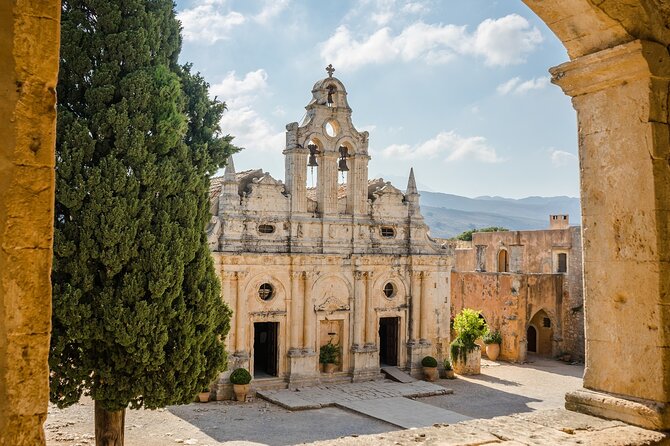
Embarking on the Arkadi Monastery and Ancient Eleutherna Tour is a journey into the heart of Crete’s religious and archaeological heritage. The tour begins with a visit to the historic Arkadi Monastery, located southeast of Rethymno. This monastery holds significant importance in Cretan history as a symbol of resistance against Ottoman rule during the 1866 rebellion. The monastery’s impressive architecture, including its central church, courtyard, and fortified walls, reflects its Byzantine and Venetian influences.
After exploring the Arkadi Monastery and learning about its pivotal role in Cretan history, the tour continues to Ancient Eleutherna, an ancient city nestled in the foothills of Mount Ida. This archaeological site offers a glimpse into the ancient past of Crete, with remnants of Minoan, Hellenistic, Roman, and Byzantine civilizations. Visitors can wander through ancient streets, view well-preserved houses, tombs, and temples, and marvel at artifacts displayed in the on-site museum.
The Arkadi Monastery and Ancient Eleutherna Tour provides a holistic perspective on Crete’s cultural and historical layers, from its religious heritage to its ancient civilizations. It offers a captivating blend of spirituality, archaeology, and storytelling, making it a memorable and enlightening experience for travelers interested in delving into the island’s rich past.
History of Arkadi Monastery
Arkadi Monastery, located in the Rethymno region of Crete, has a long and storied history dating back to the Byzantine era. Founded in the 5th century, the monastery served as a center of Orthodox Christian worship and learning. Over the centuries, Arkadi grew in prominence, becoming a symbol of Cretan identity and resilience.
Significance of the Monastery in Cretan History
The significance of Arkadi Monastery in Cretan history is deeply intertwined with its role in the Cretan resistance against Ottoman rule. In 1866, during the Cretan uprising, Arkadi Monastery became a focal point of resistance as Cretan rebels and civilians sought refuge within its walls. Despite facing overwhelming odds, the defenders of Arkadi chose to detonate the gunpowder magazine rather than surrender, resulting in a tragic but heroic sacrifice that galvanized Cretan national sentiment and garnered international attention.
Arkadi Monastery’s role in the Cretan struggle for freedom made it a symbol of resistance, courage, and sacrifice. Its memory is revered by Cretans and serves as a reminder of the island’s resilience in the face of adversity.
Exploration of Ancient Eleutherna
Ancient Eleutherna, located near Arkadi Monastery, is an archaeological site that offers a fascinating exploration into Crete’s ancient past. The site, inhabited since the Minoan period, features remnants of Minoan, Hellenistic, Roman, and Byzantine civilizations. Visitors can explore ancient streets, houses, public buildings, and necropolises, gaining insights into daily life, religious practices, and artistic achievements of past civilizations.
Highlights of the exploration include the Doric Fountain, the Roman cisterns, the Hellenistic walls, and the archaeological museum showcasing artifacts unearthed from the site. Ancient Eleutherna provides a tangible connection to Crete’s rich archaeological heritage, allowing visitors to step back in time and appreciate the island’s cultural legacy spanning millennia.
Gortyna and Festos Archaeological Sites Tour
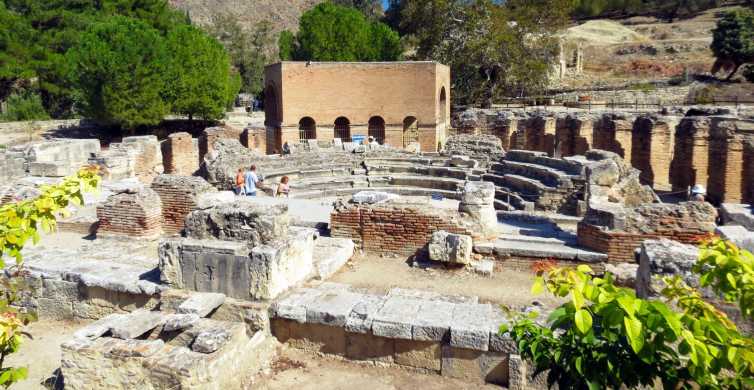
Embarking on the Gortyna and Festos Archaeological Sites Tour is a fascinating journey into the ancient history of Crete, showcasing two significant archaeological sites that offer glimpses into different periods of Cretan civilization. The tour begins with a visit to Gortyna, once one of the most important cities in ancient Crete and a thriving Roman and early Byzantine settlement. Here, visitors can explore the remnants of Roman baths, temples, the Odeon, and the impressive Gortyna Law Code inscribed on stone, providing insights into ancient legal practices.
The tour then proceeds to Festos (Phaistos), an ancient Minoan city situated on a hilltop overlooking the fertile Messara Plain. Festos boasts one of the most well-preserved Minoan palace complexes in Crete, featuring grand courtyards, storerooms, and ceremonial areas. Visitors can marvel at the intricate architecture, vibrant frescoes, and the mysterious Phaistos Disc, an enigmatic artifact found at the site.
The Gortyna and Festos Archaeological Sites Tour offers a comprehensive exploration of Crete’s diverse history, from its Roman and Byzantine periods at Gortyna to its ancient Minoan civilization at Festos. It provides a deeper understanding of Cretan culture, governance, and architectural achievements, making it a captivating experience for history enthusiasts and cultural explorers alike.
Introduction to Gortyna Archaeological Site
Gortyna, located in the fertile Messara Plain of Crete, is an ancient archaeological site that holds significant historical and cultural importance. It was one of the major cities of ancient Crete and played a crucial role during the Roman and early Byzantine periods. The site boasts remnants of Roman baths, temples, an Odeon (theater), and the famous Gortyna Law Code, which provides valuable insights into ancient legal systems and practices.
Highlights of Festos Archaeological Site
Festos, also known as Phaistos, is an ancient Minoan city situated atop a hill overlooking the Messara Plain. The archaeological site of Festos is renowned for its exceptionally well-preserved Minoan palace complex, featuring grand courtyards, storerooms, and ceremonial spaces. One of the main highlights of Festos is the enigmatic Phaistos Disc, a clay disk inscribed with mysterious symbols that continue to puzzle scholars and archaeologists.
Understanding Ancient Cretan Civilizations
Exploring both Gortyna and Festos offers a comprehensive understanding of ancient Cretan civilizations. Gortyna provides insights into Crete’s interactions with the Roman and Byzantine worlds, showcasing elements of governance, law, and urban life during those periods. On the other hand, Festos offers a glimpse into the advanced Minoan civilization, known for its impressive architecture, sophisticated artwork, and unique cultural practices.
By delving into these archaeological sites, visitors can gain a deeper appreciation for the diverse layers of Cretan history, from the classical Roman and Byzantine eras to the ancient Minoan civilization that flourished thousands of years ago. The Gortyna and Festos Archaeological Sites Tour thus becomes a journey through time, unraveling the complexities and richness of Crete’s past civilizations.
Samaria Gorge and Agia Roumeli Excursion
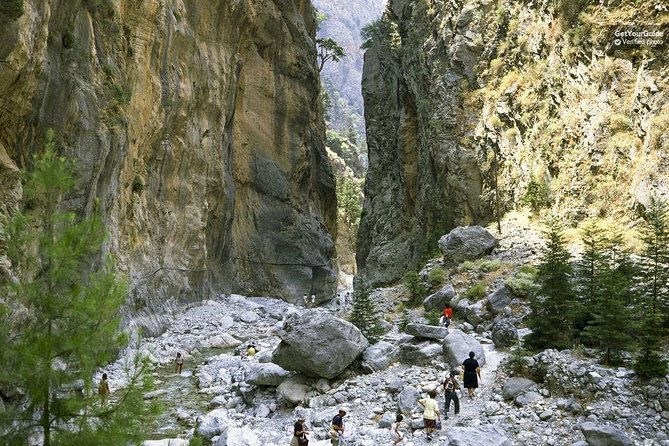
Embarking on the Samaria Gorge and Agia Roumeli Excursion is a thrilling adventure into the natural wonders and cultural heritage of Crete. The excursion begins with a trek through the stunning Samaria Gorge, one of Europe’s longest gorges and a UNESCO Biosphere Reserve. As you traverse the gorge, marvel at the towering cliffs, lush vegetation, and the melodious sounds of the river running through the gorge. Along the way, encounter endemic flora and fauna, including the rare Cretan wild goat, known as the kri-kri.
Upon reaching the end of the gorge, the excursion leads to the coastal village of Agia Roumeli, nestled at the southernmost tip of Crete. This picturesque village offers a tranquil retreat with its crystal-clear waters, sandy beaches, and traditional tavernas serving fresh seafood. Explore the village’s Venetian fortress ruins, remnants of a bygone era when the village served as a strategic outpost.
The Samaria Gorge and Agia Roumeli Excursion not only allows you to immerse yourself in the island’s natural beauty but also offers insights into its historical and cultural heritage. It’s a must-do experience for nature enthusiasts and travelers seeking a blend of adventure and relaxation in Crete’s stunning landscapes.
Description of Samaria Gorge
The Samaria Gorge is a breathtaking natural wonder located in the White Mountains of Crete. Stretching over 16 kilometers, it is one of Europe’s longest gorges and a haven for nature enthusiasts and hikers. The gorge is renowned for its towering cliffs, rugged terrain, and lush vegetation, including pine forests, cypress trees, and endemic flora unique to Crete. As you descend into the gorge, you’ll encounter the crystal-clear waters of the River Samaria, creating a serene atmosphere amidst the dramatic landscape. The hike through Samaria Gorge offers stunning vistas, wildlife sightings, and a sense of adventure as you navigate the winding paths and rocky terrain.
Visit to Agia Roumeli and Its Venetian Fortress
At the end of the Samaria Gorge hike, the excursion leads to the coastal village of Agia Roumeli, nestled along the southern coast of Crete. One of the highlights of Agia Roumeli is its Venetian fortress, a historical landmark perched on a hill overlooking the village and the Libyan Sea. The fortress, dating back to the Venetian era, offers panoramic views of the surrounding coastline and serves as a reminder of the area’s strategic significance in maritime history. Visitors can explore the fortress ruins and soak in the picturesque coastal scenery.
Natural and Historical Beauty of the Area
The Samaria Gorge and Agia Roumeli Excursion showcases the natural and historical beauty of the area, combining stunning landscapes with rich cultural heritage. The rugged terrain of Samaria Gorge, with its towering cliffs and pristine river, captivates nature lovers and hikers seeking adventure in Crete’s wilderness. Meanwhile, Agia Roumeli’s coastal charm, sandy beaches, and Venetian fortress offer a glimpse into the region’s maritime past and the enduring allure of its coastal villages.
Overall, the excursion provides a harmonious blend of natural wonders and historical landmarks, making it a must-visit for those eager to experience the diverse beauty of Crete’s landscapes and cultural heritage.
Spinalonga Island and Agios Nikolaos Day Trip
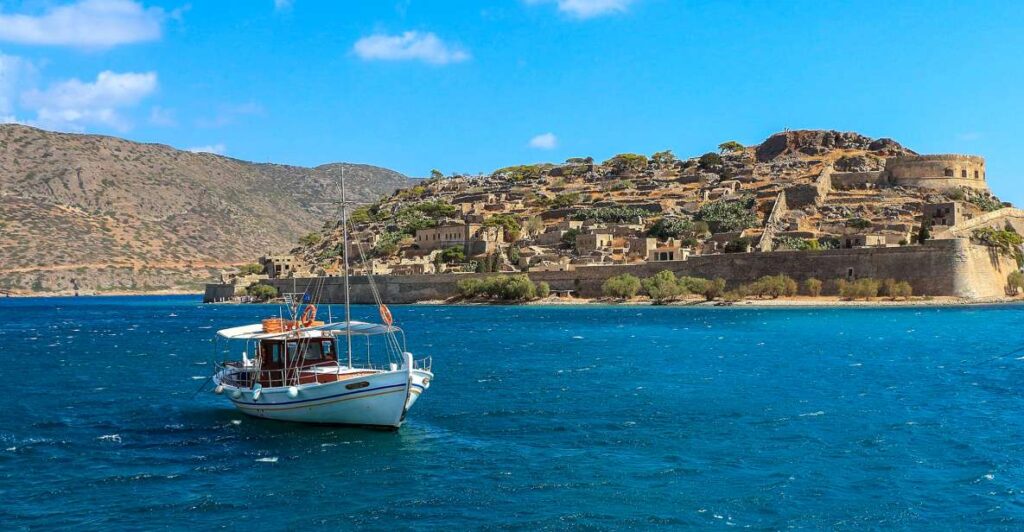
Embarking on a day trip to Spinalonga Island and Agios Nikolaos offers a captivating journey into the rich history and natural beauty of Crete’s northeastern coast. The excursion begins with a boat ride to Spinalonga Island, a small islet with a storied past. Once a Venetian fortress and later a leper colony, Spinalonga is steeped in historical significance. Visitors can explore the well-preserved fortress walls, the abandoned houses of the leper colony, and learn about the island’s poignant history through guided tours.
After immersing in the history of Spinalonga, the day trip continues to Agios Nikolaos, a charming coastal town known for its picturesque harbor, boutique shops, and lively atmosphere. Visitors can wander along the waterfront promenade, enjoy panoramic views of the Mirabello Bay, and visit attractions such as the Archaeological Museum of Agios Nikolaos, showcasing artifacts from Minoan to Roman times.
The Spinalonga Island and Agios Nikolaos day trip offers a perfect blend of historical exploration and seaside relaxation, making it a memorable experience for travelers seeking to discover the cultural and natural gems of northeastern Crete.
History of Spinalonga Island as a Leprosy Colony
Spinalonga Island, situated off the coast of Crete, carries a haunting yet intriguing history as a former leprosy colony. Originally built by the Venetians as a fortress to protect the region from invasions, Spinalonga gained notoriety in the early 20th century when it became a quarantine site for leprosy patients. The isolated island provided a refuge for those afflicted with the disease, offering medical care and a semblance of community in a time of societal stigma and fear. The abandoned houses, hospital buildings, and church remnants on Spinalonga stand as poignant reminders of the island’s role in medical history and the resilience of its inhabitants.
Exploration of Agios Nikolaos Town
Agios Nikolaos, a charming town nestled on the Mirabello Bay, beckons visitors with its picturesque harbor, vibrant atmosphere, and cultural treasures. Exploring Agios Nikolaos offers a delightful mix of traditional Greek charm and modern amenities. Visitors can stroll along the scenic waterfront promenade lined with cafes, tavernas, and boutiques, or venture into the labyrinthine streets of the old town to discover hidden gems, including quaint shops selling local crafts and delicacies. The town’s lively markets, art galleries, and historic churches add to its allure, making it a captivating destination for leisurely exploration.
Archaeological Museum and Lake in Agios Nikolaos
Agios Nikolaos is home to the Archaeological Museum of Agios Nikolaos, a treasure trove of artifacts that offer insights into Crete’s ancient past. The museum’s exhibits range from Minoan pottery and sculptures to Roman artifacts, providing a comprehensive overview of the region’s archaeological heritage. Nearby, the Voulismeni Lake, a picturesque freshwater lake in the heart of Agios Nikolaos, adds to the town’s charm. Legend has it that the lake is bottomless, adding an air of mystique to its serene beauty. Visitors can enjoy leisurely walks around the lake, relax at waterfront cafes, or take boat trips to explore the lake’s surroundings, creating memorable experiences in this enchanting Cretan town.
Elounda and Knidos Day Cruise
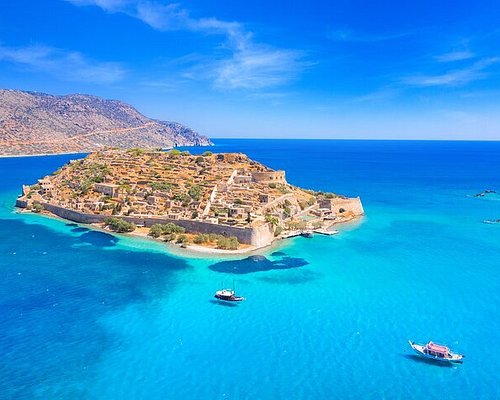
Embarking on the Elounda and Knidos Day Cruise is a delightful journey through the azure waters of the Aegean Sea, offering a blend of scenic beauty, historical exploration, and seaside relaxation. The cruise begins in the charming coastal town of Elounda, known for its picturesque harbor, sandy beaches, and panoramic views of the surrounding landscapes. As the boat sets sail, passengers can admire the coastal scenery, including rugged cliffs, hidden coves, and the iconic Spinalonga Island in the distance.
The highlight of the day cruise is a visit to Knidos, an ancient Greek city located on the Datca Peninsula in Turkey. Knidos was renowned in antiquity for its monumental architecture, including the Temple of Aphrodite and the ancient theater overlooking the sea. Visitors can explore the well-preserved ruins of Knidos, wander through ancient streets lined with marble columns, and marvel at the panoramic views from the archaeological site.
Throughout the day cruise, passengers can indulge in Mediterranean cuisine served onboard, soak up the sun on the deck, and enjoy swimming stops in crystal-clear waters. The Elounda and Knidos Day Cruise offers a perfect combination of relaxation, exploration, and cultural immersion, making it a memorable experience for travelers seeking to discover the beauty and history of the Aegean coast.
Overview of Knidos Ancient City
Knidos, an ancient Greek city located on the Datca Peninsula in Turkey, holds a rich historical legacy and architectural splendor. Founded in the 4th century BCE, Knidos was renowned for its strategic location, thriving trade, and cultural achievements. The city boasted impressive monumental architecture, including the renowned Temple of Aphrodite, which housed a famous statue by Praxiteles, and an ancient theater with panoramic views of the Aegean Sea. The well-preserved ruins of Knidos offer insights into ancient Greek civilization, urban planning, and artistic prowess, making it a fascinating destination for history enthusiasts and cultural explorers.
Scenic Beauty of Elounda Bay
Elounda Bay, nestled along the northeastern coast of Crete, captivates visitors with its scenic beauty and tranquil ambiance. The bay is framed by rugged cliffs, lush greenery, and crystal-clear waters, creating a picturesque setting for leisurely strolls, sunbathing, and water activities. Visitors can admire panoramic views of the Mirabello Gulf, relax on sandy beaches, or explore the charming town of Elounda with its traditional tavernas, waterfront cafes, and boutique shops. The scenic beauty of Elounda Bay provides a perfect backdrop for a day of relaxation and exploration.
Highlights of the Day Cruise and Historical Insights
The Elounda and Knidos Day Cruise combines the scenic beauty of Elounda Bay with a visit to the historical marvels of Knidos. Passengers on the cruise can enjoy panoramic views of the coastline, including rugged cliffs, secluded coves, and the iconic Spinalonga Island. The highlight of the cruise is the visit to Knidos, where passengers can explore the ancient city’s ruins, including the Temple of Aphrodite, the ancient theater, and the well-preserved city walls.
Throughout the day cruise, passengers are treated to Mediterranean cuisine served onboard, swimming stops in crystal-clear waters, and opportunities to relax on the deck and soak up the sun. The cruise provides historical insights into ancient Greek civilization, maritime trade, and cultural exchange, offering a memorable and enriching experience for travelers exploring the Aegean coast.
Conclusion of Historical Tours in Crete
Exploring the historical tours in Crete is an enriching and captivating experience that unveils the island’s diverse heritage and cultural tapestry. From the ancient Minoan civilization to Byzantine and Venetian influences, Crete’s historical tours offer a comprehensive journey through time, showcasing architectural marvels, archaeological treasures, and significant landmarks.
The Knossos Palace Tour immerses visitors in the grandeur of the Minoan civilization, while the Heraklion Archaeological Museum provides a deeper understanding of Crete’s ancient past through its rich collections. The exploration of sites like Gortyna, Festos, and Ancient Eleutherna offers insights into Crete’s classical and Hellenistic periods, highlighting the island’s contributions to ancient Greek history.
Venturing into Chania’s old town reveals Venetian and Ottoman influences, while the Rethymno Fortress and Old Town exploration showcases medieval charm and historical intrigue. The day trips to Spinalonga Island, Agios Nikolaos, and Knidos combine natural beauty with cultural immersion, offering a blend of scenic landscapes and archaeological wonders.
Overall, historical tours in Crete are a testament to the island’s rich and diverse history, inviting travelers to delve into the past, uncover hidden treasures, and appreciate the legacy of civilizations that have shaped Crete into a captivating destination for history enthusiasts and cultural explorers alike.
